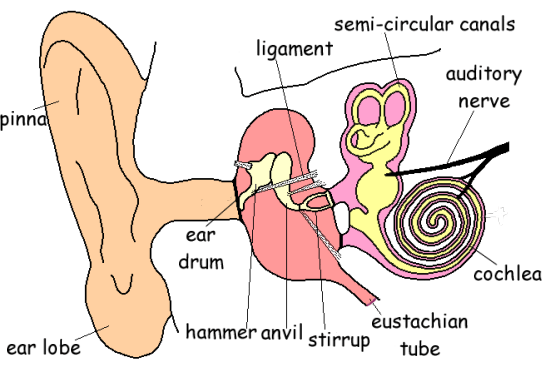Ear Structure

The sound vibrations enter the ear, guided by the pina. These vibrations cause the ear drum (a thin membrane) to vibrate. The vibrating ear drum make the three ear ossicles (the hammer, anvil and stirrup bones) to vibrate in turn. These ear ossicles amplify the sound so that even very quiet sounds can be heard. The eustation tube (which leads to the back of the mouth) helps keep the pressure of the middle ear constant. The ear ossicles in turn make the round window of the cochlea vibrate. The vibrations enter the cochlea which is a coiled fluid filled tube. Vibrations travel better in a liquid than in a gas. The vibrations which travel through the cochlea, make sensitive cells which line the tube vibrate. The cells are sensitive to a particular frequency of vibration and so a number of cells may vibrate when hearing a particular sound. The cells send impulses via the auditory nerve to the brain.
The semi-circular canals are fluid filled tubes. When our head moves the fluid in these canals stays still. Sensory cells which can be found in these canals sense the movement of fluid over them as the head moves. In this way the brain has an awareness of the position of the head.
